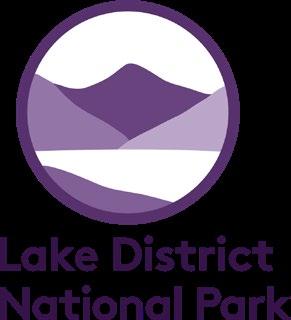Where do you want to get to?
Public appetites for the future of the Lake District’s transport system






Public appetites for the future of the Lake District’s transport system





The extent and nature of problems relating to access and transport within the Lake District are contentious, which places limits on ambition for change. Despite this, there is a general sense that “something must be done”.
The Lake District National Park Partnership’s Sustainable Transport and Travel Action Plan1 provides immediate context and impetus for this work. From this, several questions emerged that exposed a gap in knowledge and understanding of public appetites for change with respect to the Lake District’s transport system. This work was designed specifically to address this gap by posing three related questions:
a. Is there an appetite for change in terms of travelling to and around the Lake District, and how strong is this appetite?
b. If so, what is the nature of desirable change? What do people want to see happen?
c. How consistent is any desire for change across different types of people?
The work was carried out in 2022-2023. This meant that
• The shadow of Covid lockdowns and rebounds was recent and probably influenced responses. The influences were probably varied – such as people having recent experiences of calmer and more localised transport as well as a desire for revival of visitor travel and activity for the recovery of the local visitor economy. We did not try to unpick these influences, but remained aware of them as we designed and implemented the research;
• The early stages of research were before the Government’s £2 bus fare cap.
1 Lake District National Park Partnership Management Plan (Outcome 5: Sustainable travel and transport)
This work takes a very different approach compared to previous work related to access and transport in the Lake District; the focus here is about gauging appetites for change and the nature of desirable change.
It deliberately does not try to lead respondents in any specific direction. Where we did mention specifics - for instance when testing scenarios – it is done consciously and with carefully considered wording and balance to reduce the risk of leading responses. We know from previous work that
This is the main report that pulls together and explains the findings from several strands of research commissioned for this study, plus a separate relevant study. In addition to this report, for this study there are:
• A summary of headline findings: Available online at https://www. cumbriaaction.org.uk/what-we-do/ transport
• All the component research elements: These are varied in format from raw data to different types of summaries from different sources. If you would like to access these, please make contact via info@cumbriaaction.org.uk so that we can discuss your needs.
Who was involved in this study?
This study was commissioned via the Lake District National Park Partnership Sustainable Transport working group in 2022.
It was coordinated by Action with Communities in Cumbria (ACT) via a working group comprising Lorrainne Smyth1 (ACT and chair of the LDNPP sustainable transport working group), Emma Moody (Lead Strategy Adviser, Recreation and Sustainable Transport, Lake District National Park Authority), Kate Willshaw (Policy Officer,
1 Lorrainne Smyth biography on ACT staff information page
people can engage more meaningfully around “for instance” ideas rather than being asked (just) to come up with ideas and opinions from scratch.
The work is designed to capture views across a deliberately wide range of types of people to see what general views emerge as well as to identify strongly held but minority views. How we approached this is described in ‘Who did we sample?’ and ‘Methods’ (both p.5).
We are aware that there is more value in the data collected, so we would be particularly pleased to hear from anyone with an interest in undertaking further research on the data.
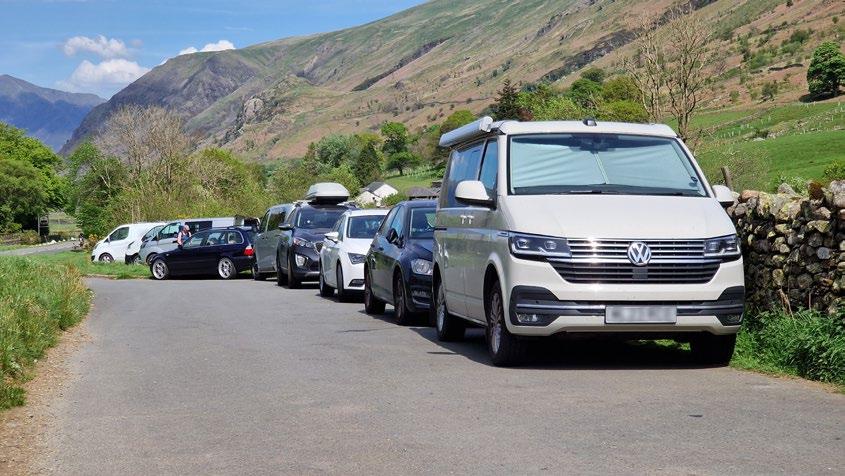
Friends of the Lake District) and Alistair Kirkbride2 (freelance rural and visitor sustainable transport researcher). The working group liaised with the LDNPP Sustainable Transport working group throughout the study.
The work was funded by the Esmee Fairbairn Foundation (via ACT), the Lake District National Park Authority and Friends of the Lake District.
2 Alistair Kirkbride LinkedIn profile, Grid Square website, Low Carbon Destinations wesbite
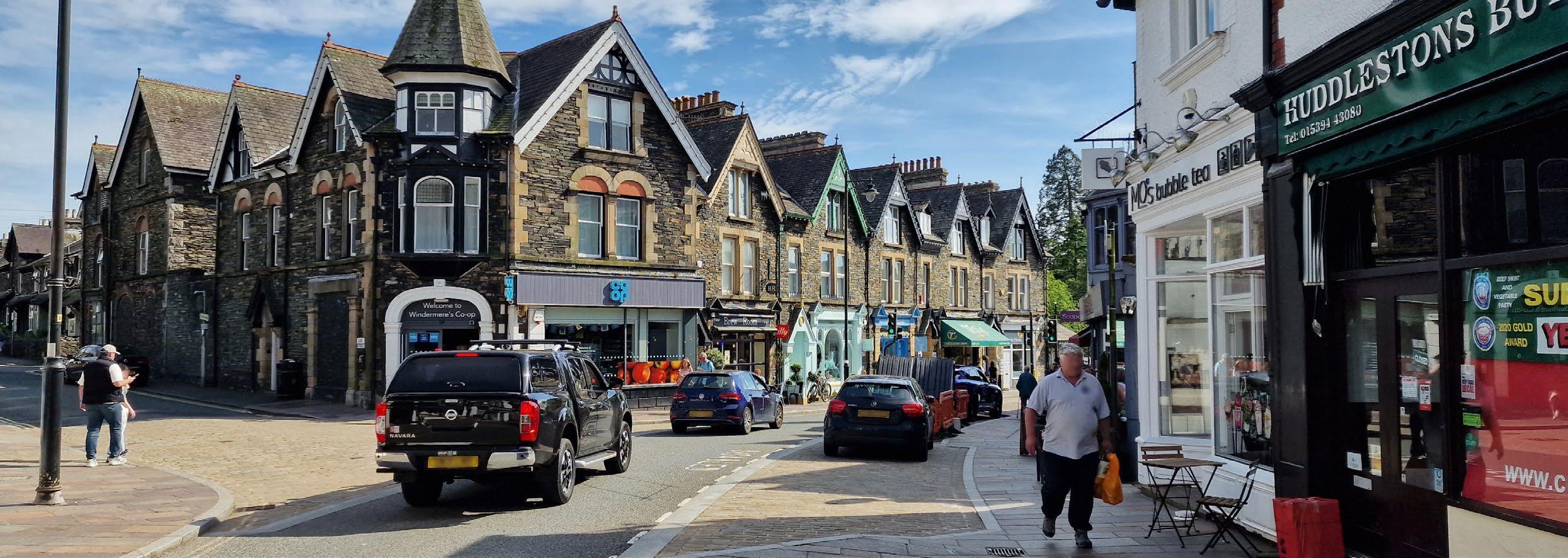
This section covers who we targeted and why, and a description of the methods we used for sampling and capturing data. Finally, we present a short critique of the effectiveness of the methods against the research questions we set.
Our sampling methods were designed to sample appetites from people across a wide variety of backgrounds, experiences, and awareness of the Lake District.
For instance, Figure 1 illustrates how we considered the resident/visitor versus leisure/ utility purposes rather than over-simplifying the visitor versus resident split.
We were also keen to include:
• a wide age spectrum
• people speaking as private individuals and from organisations
• people both familiar and less familiar with the area
• people who are not directly engaged with transport and access issues
A variety of methods were used to gauge appetites. This was deliberate to minimise the influence of sampling method on responses and to target different types of respondents via appropriate methods. We were aware that whilst we had clear
1: Journey use cases by purpose and residency
awareness regarding the range of participants we wanted to include, we could only go so far to attain these. The choice of variety of methods was partly to maximise the chance of capturing the desired variety of respondents.
The whole research involved six sources of information:
• Live surveying at initial event
• Questionnaires
• Focus groups
• Cumbria Tourism survey 2023
• Online survey of non-visitors
This programme of research was launched at an online event that was open to everyone in October 2022. Details of the event and full video and all presentations are given at https://www.cumbriaaction.org.uk/what-wedo/transport.
This was structured around presentations of four different perspectives on future transport from invited external experts:




Jillian Anable
Professor of Transport and Energy, University of Leeds; Transport, carbon emissions and social trends in car use
James Berresford
Board Member at Peak District National Park and previously CEO of Visit England (2009-2016)Visitor economy
James Blake CEO of the YHA - Social exclusion
Stephen Joseph
Visiting Professor, University of Hertfordshire Smart Mobility Research Unit; previously CEO of the Campaign for Better Transport (1988-2018 Transport Policy

Participants’ views on three future scenarios were tested before and after the presentations. The scenarios were carefully designed to demonstrate overall neutrality yet allowing people to align with or identify with a future with which they felt most comfortable. The scenarios were:
a. Car access remains dominant: new car parks & better co-ordinated parking management.
b. Peak season visitor access management involving some traffic restrictions with integrated transport services linking to gateway park & ride sites.
c. A more fundamental shift towards integrated, frequent, affordable public transport that takes priority over private cars.
The main purpose of this was to provide an initial indication of the flavour of appetites for change to help inform the subsequent phases of engagement. We did not assume that these responses were typical of a broader population as the participants were self-selecting but this did allow us to question whether and how to design subsequent engagement to ensure an overall balance of opinions.
This research component was designed to target people who were familiar with the Lake District, as residents, businesses or visitors. It was the main research component for the study.
Using a common set of questions, research was undertaken via both face-to-face interviews and online. This acknowledged that different types of people are attracted to – or put off by – survey method, and we were keen to reduce bias linked to how we were engaging with people.
Face-to-face
• The face-to-face surveys were carried out on-street in May 2023 in Ambleside, Keswick and Whitehaven.
• The three locations were chosen to mix up place-type relative to the Lake District
(in or out of the national park). Keswick and Ambleside were selected to capture the acknowledged different sources of visitors to the northern Lake District (West Cumbria, northeast England) and central/southern Lake District (Lancashire, Manchester and central/southern England).
• 309 surveys were carried out successfully.
• The age groups of those surveyed are shown in Figure 2.
• Respondents for the online questionnaires were sourced using partner contact lists and through press and social media.
• 1,112 responses were received.
Figure 3: Comparison of live/work/visit status of the face-to-face and online questionnaire respondents
Observations
Figures 2 and 3 show that:
• A significantly higher proportion of the online questionnaire respondents lived in the Lake District compared to face-toface; the face-to-face surveys picked up a higher proportion of visitors.
• The face-to-face surveys picked up younger people than the online survey.
This provides significant value to how we interpret the results: that the online respondents are residents and older, the face-to-face being visitors and younger.
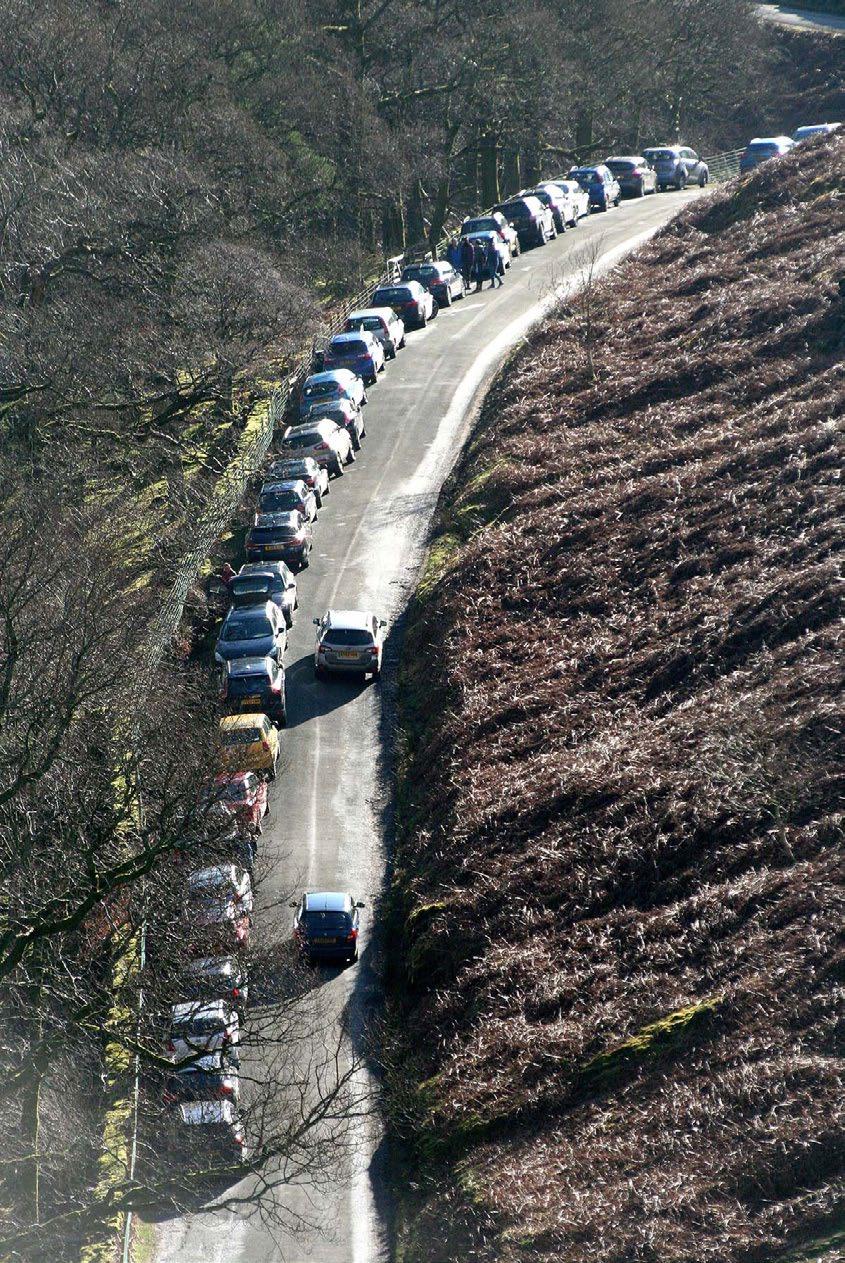
Three focus groups held in July 2023 involving 27 participants from business (8), Parish Councils (6), community groups (6) and private individuals (7). The focus groups were advertised via partner contacts, and any participant was able to attend. The purpose was to delve more deeply into the findings that emerged from the questionnaire results – to enable reflection and discussion around the more quantitative findings. Discussion was guided using three key questions in each session:
• Do you recognise the opinions expressed in the research findings. What are your thoughts on the findings?
• Assuming the majority of respondents were open to change, that involves some management of travel by car, what are the challenges and opportunities for (a) businesses, local residents and communities and (b) Visitors and leisure travellers?
Cumbria Tourism survey 2023
An online survey was conducted separately by Cumbria Tourism on the perceptions of people who do not visit the Lake District. Whilst not commissioned as part of this study, it includes rich intelligence that is relevant to this work, and we are grateful to Cumbria Tourism for making it available.
Online survey of non-visitors
A national polling organisation was used to target 1000 UK residents who were not particularly familiar with the Lake District. This was to test perceptions of people who had no direct or recent experience of the geography or issues relating its access and transport systems.
Whilst the target respondents were similar to the CT survey, this survey was designed to explore more specifically issues close to this study – namely perceptions of access and transport by people who have not used it.
• Thinking of 10 years from now, how would you like to be travelling around the Lake District, and how do you think you will be travelling around, if this is different?

• 1672 responses were received.
• Respondents from outside Cumbria were targeted (99.6%), meaning that this provides a very different profile compared to the other methods included here.
Of the 1000 respondents:
had considered visiting the Lake District but hadn’t visited
had never considered it
had visited, but not recently
Our analysis was done on the 30% and 10% who had not visited.
The different sampling methods resulted in:
• A total reach of over 3000 people
• A good variety of people:
• who lived and/or visited and/or worked in the Lake District
• who are familiar and not familiar with the Lake District
• across adult age groups
In this respect, we are confident that the samples together satisfied our specific intentions regarding variety of respondents. It is not possible to say across all methods how the sample relates to national population on ethnicity or disability. The greater detail in the CT survey revealed a slight bias to white British respondents (87.9%) compared to national average (81%).

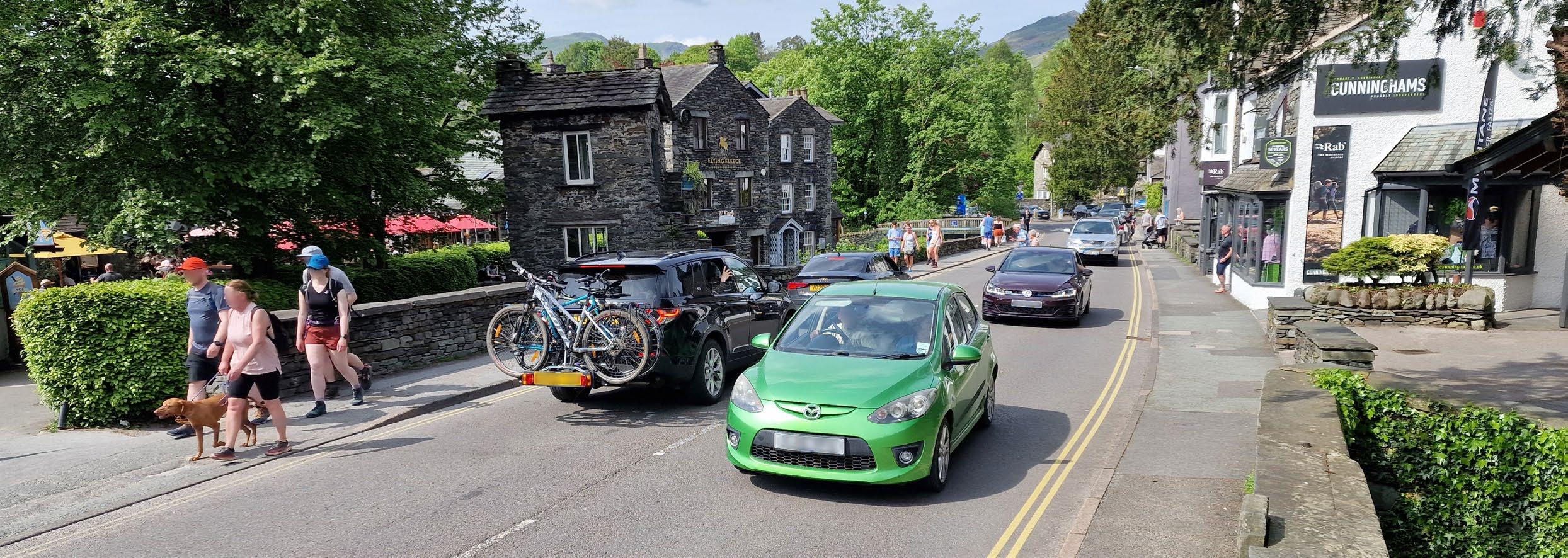
This section presents findings about key ideas, extracting relevant evidence and making observations across the different sources of evidence.
Questionnaire surveys (people familiar with the Lake District)
The results from the questionnaire surveys are shown in Figure 4, and Figure 5 shows a word cloud of the issues that emerged.
These - with the more detailed qualitative comments that exist within the survey responses - suggest that:
• Traffic – especially at busy times resulting in congestion – is seen as a key problem
• Car parking – capacity/availability and (often) cost – are seen as issues, but
• Inadequacies in public transport are common concerns.
These included issues such as cost, lack of integration, public transport “deserts” and services not being available into evenings and out of season.

Figure 4: Perceptions of existing access and transport arrangements
pretty good, all things considered
I don’t really have a strong view or haven’t really thought about it It’s terrible It’s pretty poor generally It’s OK - some good aspects but some problems
Figure 5: Word clouds from comments of face-to-face (above) and online (below) questionnaire respondents
Of the freely given perceptions of the Lake District:
• “Hard to get to” was cited by 15.2% of respondents, though this issue was 25th out of 37
• “Traffic” was cited (as a negative) by 9.7% respondents – 31st out of 37 issues
The majority of perceptions were wholly positive (beautiful, peaceful, mountains etc), suggesting that in terms of general perceptions:
• Perhaps as expected, access and transport is not seen as a significant part of the character or draw of the Lake District, but
• When it is cited, it is generally in a negative light.
When non-visitors were asked about why they did not have an intention to visit, access and transport-related issues take more prominence (Figure 6):
• “Distance” and “Difficult to get to” can be seen as related and align with the “hard to get to” general perception;
• It can be assumed that “Lack of public transport” means that there is a perception of poor or non-existent public transport (as they had not visited), possibly in comparison to more extensive urban public transport in the home areas of respondents.
Figure 6: Reasons given by people for not visiting the Lake District; green relate to access and transport
Don’t know enough about it I don’t take day trips/holidays Lack
Don’t know Lack
Don’t like the look/sound of it
General comments
Figure 7 suggests that perceptions of
• travel time and cost of transport are significant issues that put people off visiting the Lake District.
• travelling around the Lake District is of some concern, but of secondary significance in terms of putting people off visiting.

Whilst assessing people’s views of existing access and transport provides good foundations of understanding for this study,
Event poll
The polls at the launch event were taken before and after different perspectives provided by four external speakers. It was an initial indicative sampling of appetites in the context of a self-selecting event audience who were attracted in to (a) the event and (b) to hear the perspectives of the variety of external experts.
The scenarios were:
• A significant and robust appetite for change in transport provision compared to the current system, where car-based access is the norm. The first question was designed to test the pragmatic idea that if car access is - and is perceived to
In summary:
• The views of respondents did not significantly change in response to the presentations.
• This might be because the type of selfselecting participant to such an event came with more considered views on the issues beforehand.
the key questions relate to appetites for change and the nature of change.
continue to be - the norm, then it needs to be better and more actively managed.
• A desire for more active intervention in managing visitor access at busy times. The second question was designed to explore the nature of the change without it being for or against any specific type of transport (car, bus etc). the “for instance” options were included as familiar, neutral interventions to facilitate clear and rapid understanding.
• A desire for affordable, integrated public transport that has priority over cars
• Even though the event and the questions were both carefully designed to minimise any bias, there was
• an overwhelming appetite for change
• a desire for change towards extensive, affordable integrated transport and peak-season managed visitor access.
The face-to-face and online respondents were each asked to respond to three future scenarios for access and transport:
1. More managed access to busy places at busy times. The management of traffic and parking at busy times and in busy places e.g. shuttle buses for visitors with parking managed and enforced, while still enabling essential access by residents, businesses, buses and emergency services. (There could be exemptions for people with additional needs in this scenario).
2. Continue as is.
3. A fully integrated public transport system. Widespread networks of frequent and on-demand buses and shuttles, integrated with boats and rail (with easy-to-understand ticketing like in many cities), made possible by managing traffic and parking - by limiting car use/ reducing cars and using options like park and ride. (There could be exemptions for people with additional needs in this scenario).
These were essentially the same as those tested at the launch meeting, though presented in a different order. For the purposes of clarity, results will be presented here the in same order as for the launch meeting.
Two questions were asked in relation to the scenarios: which scenario respondents prefer, and which should be prioritised. This was in response to scenarios being tested at the launch event – to try to disaggregate people’s personal preferences for travel from a greater sense of what they saw as “the right thing to do”.


ABOVE: Pedestrians and cars navigate tight roads and narrow pavements
People were asked about the extent to which they considered carbon reduction to be a priority for any changes to the transport system via the questionnaire surveys.
Figure 9 suggests that:
• The opinions of online (more residents/ older) and face-to-face (more visitors/ younger) respondents were very different.
• 84% of online respondents (more residents/older) said that carbon reduction regarding the Lake District’s transport system was either important (25%) or very important (59%). Only 39% of face-to-face (more visitors/younger) respondents saw it as important (21%) or very important (18%).
• The face-to-face (more visitors/younger) respondent’s main response was “neutral”.

The face-to-face and online questionnaire surveys provided the opportunity for respondents to answer, “What do you think is the best way of doing this [delivering their preferred transport scenario]?”. The responses were free and unled; Figure 10 indicates the nature of responses for the two survey methods.
Figure 10: Freely suggested solutions or priorities to improve for the Lake District’s access and transport
The categories were formed by clustering similar types of responses. Some respondents made several suggestions which were treated as separate solutions. Some solutions were linked, such as “Park and ride served by
Key observations of the charts include:
• The overall nature of solutions aligns with those of the preferred scenarios (p.15), namely better public transport and cycling provision, reduction in traffic with possible traffic restrictions or demand managed through some form of charging.
• Given the free nature of the responses, there is a marked lack of desire for procar policies. Where this is mentioned, it is often linked to better managed car parking or for visitor demands to be managed away from car use so that routine resident and business car use is more reliable.
• The order of preferences is different for the different methods:
• Face to face respondents – younger and more likely to be visitors rather than residents – are less clear on solutions (probably less familiar with the area and issues), are keener on reducing traffic (for better experience?), and wanting better buses and cycling (i.e. alternatives to car use). These can be seen as working together – i.e. traffic reduction (for its perceived benefits – on experience and place?) is achieved by options that reduce the need to use a car (public transport, cycling etc).
• Online respondents – slightly older and more likely to be residents than respondents to the face-to-face surveys – have a clear preference for good public transport system. Comments often linked this to well-designed park and ride for visitors, and better walking and cycling provision (routes and in-settlements) with visitor car access restrictions. Various ideas for charging visitors – via visitor levies, congestion charges etc – were suggested by some as part of this.
electric buses and good cycle routes”; these were treated as separate solutions to provide manageable analysis, accepting that some richness was lost for the benefit of providing an indication of the nature of views.
Behind the category labels lie a richness of nuance and ideas. For instance:
• Provision – or restrictions – is often related differently for residents and visitors.
• “Better public transport” often relates to more extensive coverage, more frequent services, later evening / earlier morning services, cheaper, more reliable times, better integration across modes and operators.
• “Better cycling” relates to more cycle routes, better connected places and more continuity of routes, safer roads for cycling (often linked to traffic reduction) etc.
• Electrification is mainly linked to public transport more than cars; low-emission, electrification and the need for carbon reduction are often linked.
• Park and ride is more-often-than-not linked to better public transport and cycling routes, and often meant for visitor access rather than for residents, often as seasonal services.
• Traffic reduction and “fewer cars” are often interchangeable; this is sometimes linked to traffic restrictions or seen as a desirable outcome, with alternatives proposed to deliver it (buses etc).

The Focus groups were asked to address three questions related to the face-to-face and online questionnaire findings. Key observations are set out here:
1. Do you recognise the opinions expressed in the research findings? What are your thoughts on the findings?
Participants did recognise the research findings, and noted the consistency of the main messages. There was some consensus that opinions have changed in the last five years, and that more people are likely to consider their travel habits if there are viable and practicable alternatives to private car use.
Participants highlighted congestion, parking, safety of walking and bike use in their own discussions, as well as the need for carbon reduction.
2. Assuming the majority of respondents were open to change that involves some management of travel by car, what are the challenges and opportunities for (a) businesses, local residents and communities and (b) Visitors and leisure travellers?
Participants suggested that change is needed and that (economic) charging systems would:
• improve access for all.
• require reductions or exceptions for: local people, disabled people, deliveries, business travel, those with booked accommodation who arrive and leave the car during the stay.
• and that any revenues raised would need to be invested in transport-related infrastructure and services in a transparent way.
3. Thinking of 10 years from now, how would you like to be travelling around the Lake District, and how do you think you will be travelling around, if this is different?
Participants said that they would expect there to be:
• Integrated transport system with charges and park and ride
• National leadership, on a menu of options for local implementation
• A sense of feeling safe to walk and cycle
• Fewer short term plans
• Less inequality
• Ability to live where you work
• Management of overnight stops for camper vans
• Use of pop-up car parks for events
• Electric taxis and small shuttle buses where needed
• National Parks working together
• The Lake District rebranded as the Green District
• All local and visitor travel sustainable
• ‘If we don’t change what we are doing, we will face disaster’

11: Scenarios preferred by questionnaire respondents
Figure 12: Scenarios that should be prioritised according to the questionnaire respondents
The results suggest that:
• There is an overwhelming appetite for change.
• The face-to-face respondents – who tend to be both younger and visitors –have a preference for seasonal visitor access management, whereas the online respondents (more residents and older) have a preference for an integrated transport system.
• This makes sense – in that people who live and work here throughout the year probably consider their year-round utility as well as leisure needs in choosing preferences for future transport scenarios.
• Note that in Figure 12, the responses from the launch event participants are shown for comparison. The similarity to those of the online questionnaire respondents implies similarity – namely primarily residents and generally older – as expected and observed among the launch event participants.
• There is some suggestion that whilst face-to-face (visitor/younger) respondents prefer seasonal visitor access management, there is a slight uplift in preference among them for the prioritisation of an integrated transport system. This might mean that they recognise its broader value rather than just what they personally prefer.

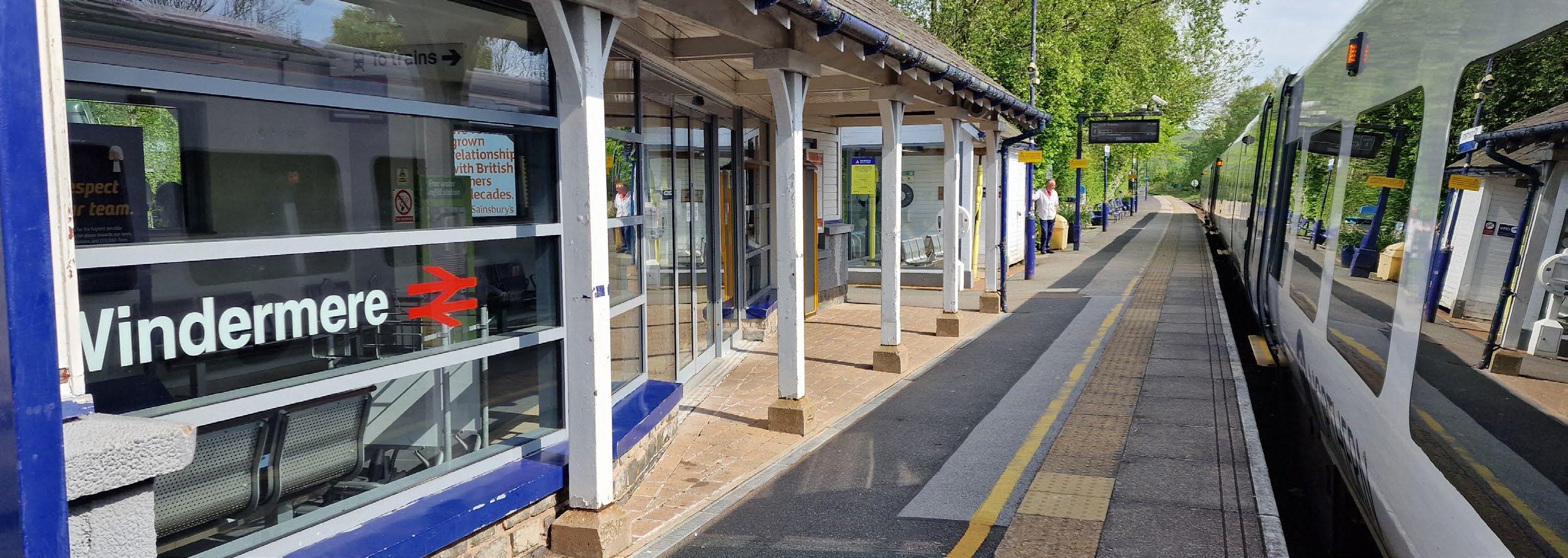
The results show that across types of people, there is significant appetite for change in the Lake District’s transport system.
• People want better and more extensive integrated public transport, and the ability to use active travel. These will be enabled by reductions in traffic, with some appetite for visitor traffic restrictions to achieve this.
• Residents are more focussed on good public transport in comparison to visitors having priority for managed seasonal visitor access. These are not incompatible.
• There is little appetite for car-focussed solutions.
These results align with other surveys of public attitudes to transport systems that use robust methodologies. For example, the Institute for Public Policy Research’s recent ‘Who gets a good deal? Revealing
public attitudes to transport in Great Britain research1’ finds that “people will back change if they can see it is fair and effective and is being implemented with empathy and support for those asked to do things differently” and “This survey puts to bed the idea that people can be pigeonholed into being just ‘drivers’.
The public’s attitudes to transport are largely pragmatic, not ideological, and there is recognition of the benefits that could come from the shift to a less car-centred transport system. Cars don’t define our identities and, regardless of car ownership, the key priority for the future is a public transport system that works for more of us.”
More locally, climate or citizen’s juries in Kendal (2020)2 and Copeland (2021)3 both reveal broad desire for better public transport and active travel, and to make vehicles cleaner.
1 Who gets a good deal? Revealing public attitudes to transport in Great Britain, Frost, S. & Singer-Hobbs, M. 2024, IPPR
2 The Kendal Climate Change Citizens’ Jury Shared Futures report 2020 (Transport recommendations on pp30-31)
3 The Copeland People’s Panel on Climate Change report
The key question is how these appetites can be translated into meaningful change for transport in the Lake District. The findings usefully inform:
• Lake District National Park Partnership Management Plan, and associated plans of the LDNPP partners
• Transport policy – such as the next generation of Local Transport Plans and Bus Service Improvement Plans that will be prepared by the Transport Authorities (Cumberland and Westmorland and Furness Councils)
• Tourism strategy – such as Cumbria’s Destination Management Plan
• Partnership working at national park and valley scales to develop and deliver access management that aligns with the appetites set out here.
• We will share these findings widely as they may help decisions made at a less local scale.
Perhaps most importantly, its main messages should provide confidence that more progressive and transformative approaches to access and transport align with majority public views. For example, the absence of any significant support for more car parking in this research should be taken into account when considering future policy relating to car parks in the Lake District.
This research would suggest that people would prefer to see the problems dealt with through well considered public transport service development such as that implemented in 2020 at Pen y Pass in Eryri/ Snowdonia National Park; this not only works from a user’s perspective4, but the associated enforcement of poor parking are seen to be fair.5
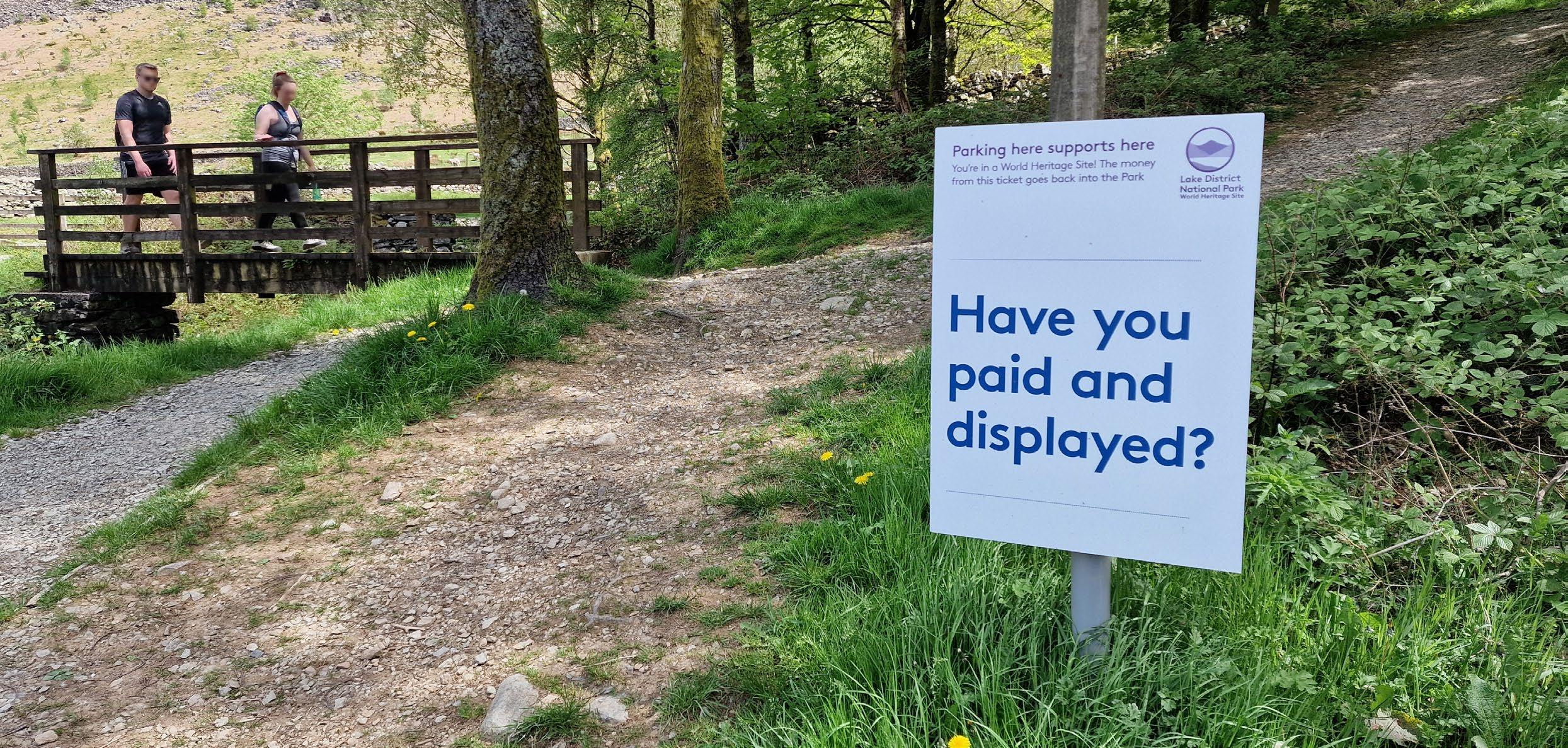
4 We try out a park and ride bus to see if it helps avoid Eryri traffic mayhem: Is this an alternative to driving in tourist-clogged national park? Daily Post, 7th April 2024.
5 ‘Serves you right’ - walkers whose cars were towed after Welsh mountain hike are told. Dozens of cars parked illegally at Eryri National Park, also known as Snowdonia, were towed away over the Easter bank holiday weekend. Wales Online, 4th April 2024.

Where do we go from here?
Having heard a clear desire for change we will use this report to inform:
• The Lake District National Park Partnership
• The Sustainable Transport and Travel Key Outcome Group of the LDNPP (STTKOG)
• The Planning Department of the LDNP
• Westmorland and Furness Council – the Transport and Planning Departments
• Cumberland Council authority – the Transport and Planning departments
• Transport operators and providers
• Transport for the North
• The Cumbria Enhanced Bus Partnership
• Cumbria Zero Carbon Partnership
• Cumbria Tourism Destination Management Plan
The report will be disseminated amongst partners, stakeholders and the media.
Open debate will be actively created and used by the STTKOG.
The findings of the report will be embedded into the delivery plans of the Lake District National Park Partnership’s Transport and Travel Key Outcome Group, which includes representatives from both transport authorities. An action plan for delivery against the results is in development.
The information will form part of the evidence base for the forthcoming reviews of the Lake District National Park Partnership Plan and Lake District National Park Authority Local Plan.
Friends of the Lake District will use this information in their campaigns and planning responses.
Communities interested in taking action on any of the findings can contact Action with Communities in Cumbria for support via info@cumbriaaction.org.uk.
ACT will produce an update on actions in six months and assess the progress made and potential opportunities.

Many thanks are due to the steering group who have stayed with this project over the two years and specifically to:
• Kate Willshaw – Friends of the Lake District
• Emma Moody – LDNPA
• Alistair Kirkbride – Independent travel consultant
• The speakers at all our events
• The participators at the events
• The respondents to the interviews, surveys and focus groups
• The funders
Finally, to Lorrainne Smyth and ACT for holding the project and seeing it to fruition. Contact info@cumbriaaction.org.uk with any queries or comments on this work. Thank you
Photo credits
Front cover: Freya Wise
Page 8 image: Alan Cleaver
All other photos: Dave Sage
Produced by Action with Communities in Cumbria (ACT). Registered in England as Voluntary Action Cumbria; Charity No: 1080875; Company No: 3957858
Design by SAGED Published May 2024
ACTion with Communities in Cumbria
Supporting communities since 1948

Registered in England as Voluntary Action Cumbria; Charity No: 1080875; Company No: 3957858
Registered Office: Office Q, Skirsgill Business Park, Penrith CA11 0FA
